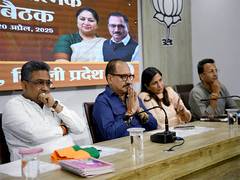After PM Modi’s call, here’s how Mandaviya-led team handled Balasore train accident crisis
New Delhi [India], June 8 (ANI): On Sunday, a day after the triple-train accident in Odisha’s Balasore, Prime Minister Narendra Modi visited the accident site. On one of the rarest occasions, PM Modi was seen having a conversation with somebody on the mobile phone. That call was made to the Union Health Minister Mansukh Mandaviya.
Sources aware of the development said that PM Modi asked Mansukh Mandaviya to rush with a team to the accident site.
“It was merely a conversation that went on for not more than 30 seconds. The message to the minister was clear that there was a crisis. It needed to be handled,” a top source told ANI.
Within an hour or two of that conversation, Mandaviya rushed to the accident site from Hyderabad where he was present for a programme. But that was not without a plan in place. The crisis is not something new to the Health Minister after having been present on the ground during the 2000 Gujarat earthquake and most recently handling the Covid crisis from the Centre.
Mandaviya asked a special team of doctors to be rushed from AIIMS and Safdarjung Hospital in the national capital to help fight the crisis- the biggest being the identification and handing over the bodies of those who had died in this unfortunate accident.
“By the time the teams got to the spot. It was nearly 24 hours and the biggest worry was ensuring the bodies’ preservation. Many of those bodies were unidentified. The instructions were clear that nobody would be released without post-mortem and embalming,” a top source in the health ministry told ANI.
But in a place like Balasore, which had limited resources, how would it be possible to preserve these bodies till the families came? The only option available was ice slabs. Here is when Mansukh Mandaviya brought forth his experience as shipping minister in the Modi government 1.0.
“The minister immediately rang up the top officials in the shipping ministry and arranged for two vessels with refrigerating capacity from Paradip and Dhamara ports. This was an important tool to manage the preserving of the dead bodies which were already impacted by the extremely hot and humid weather conditions,” another official from the health ministry told ANI.
The team that flew down from Delhi was brought in a special Indian Air Force flight to carry all the equipment necessary for embalming the bodies. But there were many bodies that needed to be embalmed urgently and the doctor’s capacity was limited.
“The minister did not waste any time and immediately called for additional doctors from AIIMS Nagpur, Raipur, and Bibinagar to expedite the job. This special team of doctors were experts in embalming and ensured that there was no panic and nobody was left to decompose,” a senior doctor on the ground, told ANI.
This was not the only job. It was a race against time to ensure that the maximum number of people who were to be given first-aid treatment was done and passengers who wished to be released after the first-aid treatment were sent back home.
“Even at the hospital, the kin of those who came to take their injured family members and to claim the bodies of those dead were given humanitarian treatment. A helpdesk was set up for identification and even there adequate arrangements for food and water were made for those coming from far and wide during this hour of crisis. Minimum inconvenience to the families was seen during this hour of crisis,” a team member working on the ground at AIIMS Bhubaneswar told ANI.
Even as bodies continue to be claimed by families and there are close to 80 bodies that remain unidentified, every care has been taken to ensure that no dead body is left to decompose.
At the end of the medical crisis being resolved, the visuals of three union ministers, Ashwini Vaishnaw Dharmendra Pradhan and Mansukh Mandaviya, standing with folded hands before the doctors and medical staff who have gone beyond the call of duty, is a reflection of the whole of government approach.






